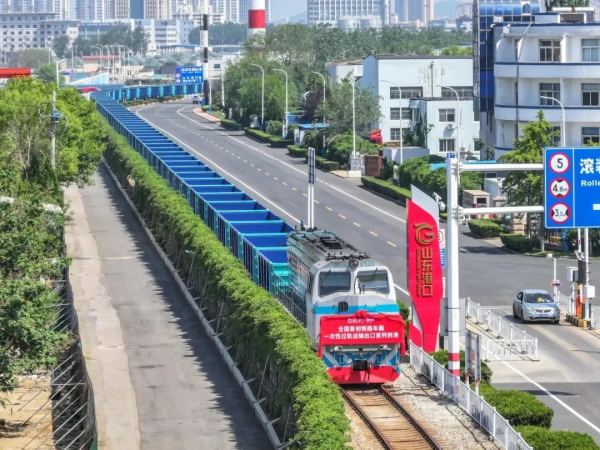The inaugural one-step rail transfer export operation for railway carriages in China has commenced at Yantai Port, Shandong Province.
This innovative initiative, a collaboration between Shandong Port Group Co., Ltd.’s Yantai Port, China State Railway Group Co., Ltd. (China Railway), Winning Consortium Simandou, and CRRC Yangtze Group Co., Ltd., facilitates the direct transportation of rail transit equipment from manufacturing sites to end-users in Africa. Guinea is the first destination for a diverse range of carriage types to follow suit, marking a significant advancement in streamlined logistics.

The first batch of open-top wagons was loaded onto vessels for departure. [Photo/sasac.gov.cn]
The “one-step rail transfer” refers to the direct transportation of self-owned freight railcars via the national railway network under a special permit, without the need for intermediate loading or transfer. This innovation breaks down traditional barriers between different levels of railway systems and serves as a significant example of China’s push to integrate its rail transit system. The model drastically reduces costs associated with transshipment, handling, and warehousing, enhances connectivity between rail and port logistics, and improves overall transport efficiency and cost-effectiveness.
Yantai Port has actively responded to China’s Belt and Road Initiative by striving to provide high-quality, value-added supply chain services for inland importers and exporters. In the early stages of this project, with the support of China Railway, CRRC Yangtze Group Co., Ltd. obtained a certificate of technical compliance for one-step rail transfer using its enterprise-owned railcars. In June, the company, together with Yantai Port, launched the service and carried out a detailed technical plan covering all key operational procedures.
According to the plan, after receiving the railcars at a nearby railway station, Yantai Port arranged for them to be towed into its shunting yard by replacing locomotives. Comprehensive on-site coordination was carried out to ensure smooth handling of dismantling and other critical processes, with dedicated personnel assigned to supervise safety throughout the operation. At the port yard, carriages were lifted and moved using cranes and trailers for exterior inspection and packaging before shipment. With the close cooperation of all stakeholders, the first batch of open-top wagons successfully passed customer inspection and was loaded onto vessels for departure.
The successful implementation of this pioneering model further strengthens the connection between railway and port systems, builds a more efficient multimodal transportation network, and advances the integrated development of China’s rail transit sector.
(Executive editor: Yuan Ting)